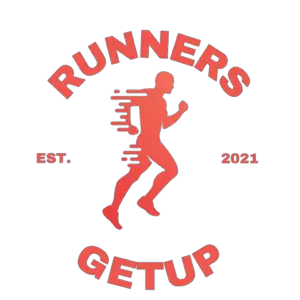This post contains affiliate links.
What you wear for trail running is not much different from what you wear when you’re running on the road. However, a few changes in some of your gears may help your trail running experience much better. I’ve been trail running a lot and I’ve tried a bunch of different gears for trail running.
Here’s what you should wear when trail running.
- Moisture-wicking shirt
- Shorts or tights
- Compression socks
- Trail running shoes
- Multisports GPS watch
- Running hat
- Light-colored sunglasses
Ahead, we will look into each of these items in detail. In addition, I will give you a few tips for buying each item on the list. I will also give you a few recommendations of some trail running gear that I’ve tried and has worked really well for me.
Moisture-Wicking Shirt
Your trail running top is not much different from your road running top.
You can wear a t-shirt, sleeveless or long-sleeved shirt as long as it’s moisture-wicking and quick-drying. Avoid using cotton shirts because they absorb sweat and decrease breathability and comfort.
Find clothes made of synthetic materials like polyester or nylon. Some companies even have special tech fabric that offers improved breathability or moisture-wicking ability.
T-shirts and sleeveless shirts are best for running in hot weather. Long sleeves are best for running in cold weather or protecting yourself against insect bites or scratches from plants when running in the deep forest.
If you’re still confused as to what type of shirt to wear for running, I made a complete guide that will walk you through the decision-making process of choosing the perfect running top. Check it out.
Shorts Or Tights
Like your running top, your shorts should be moisture-wicking and quick-drying as well.
Some runners may experience chafing in the thigh area when running for longer periods. The best way to prevent this is by wearing compression shorts or tights which could help prevent your thighs from rubbing against each other which causes friction and lead to chafing.
Some running shorts like the Lixada 2-in-1 has a built-in liner that does the same function as compression shorts.
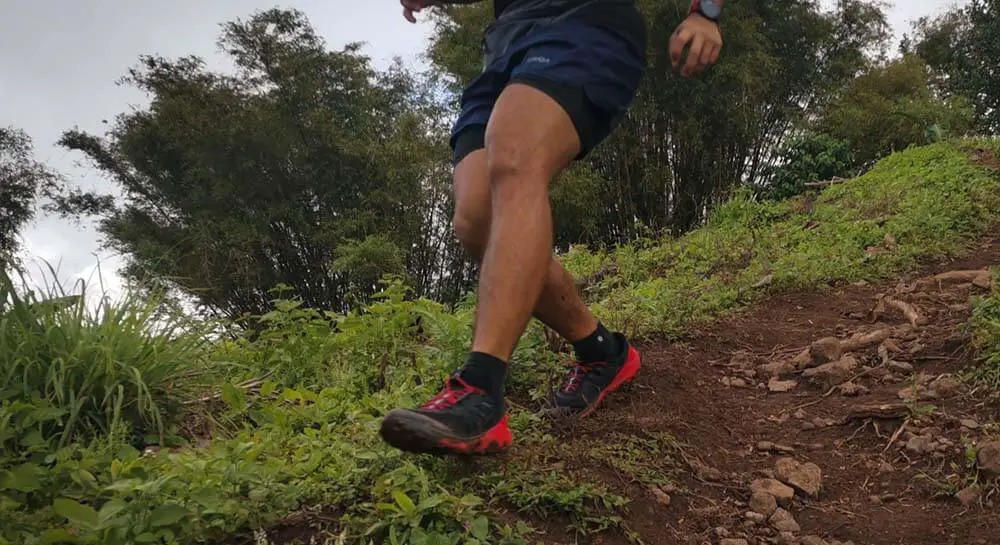
If you choose to wear regular running shorts with no liner, it is best to wear underwear that prevents chafing (link to a list of the best running underwear for men).
Compression Socks
If you’re running in mountain trails where there are lots of ascents and descents, running with below the knee compression socks help can improve blood circulation in your lower leg which leads to better recovery and reduced fatigue.
Choose compression socks that have a good level of cushion and padded protection in blister-prone areas of your feet. This helps in preventing blisters and hot spots that are very common when running on trails.
By the way, if you’re looking for good compression socks for trail running, my favorite trail socks are the Mudgear compression socks. It has a graduated compression which helps with running performance, plus it has a stronger construction which makes it perfect for trails.
Alternatively, you can check out the guide that I made of the best running socks that prevent blisters.
Trail Running Shoes
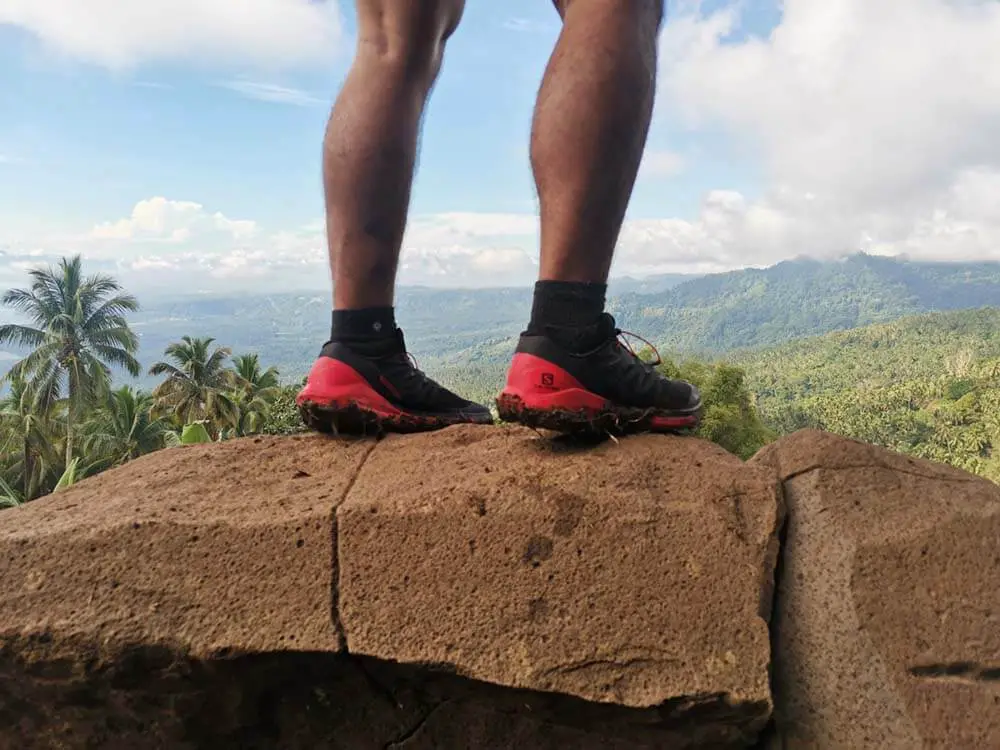
One of the biggest differences between trail running and road running in terms of gear is the running shoes.
Road running requires little underfoot protection and grip while trail running requires better protection and better foot grip.
Trail running shoes usually have deeper lugs with hard plates underneath to help protect your foot against sharp rocks and branches.
One of my favorite trail running shoes is the Salomon Sense Ride 4 (shown in the photo above). It has an impressive grip and foot protection that allows me to use it on any trail.
Multisport GPS Watch
Having a multisport GPS watch allows you to track not only your time and distance but also your pace, elevation gain, and much more.
This is particularly useful for runners who’d like to gather data that could help them take their training to the next level.
Related post: Do You Really Need A GPS Watch To Run? (Or Is a Phone Fine?)
Running Vest
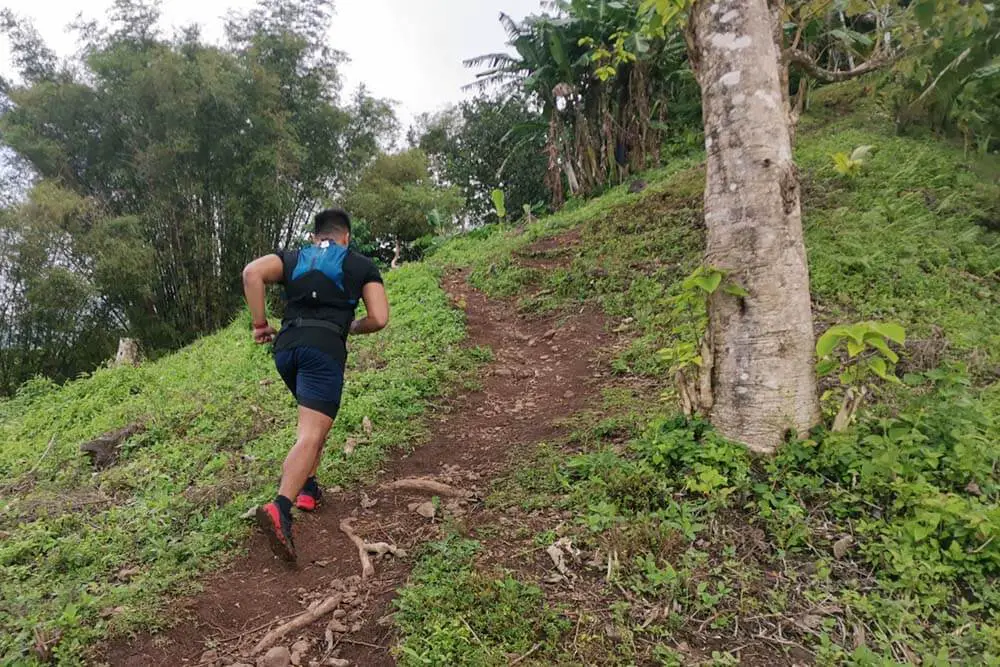
There’s a lot of ways to carry water and your personal stuff when trail running, but based on my personal experience, the best way is to wear a running vest.
What I like most about running vest compared to using a belt bag or other methods of carrying a water bottle is its convenience.
Running vests are usually secured in your body and do not restrict any motion that can distract you from your run. In addition, you can suck water right off the soft flasks and hydration bladders without having to stop running.
You can also use the vest to store other trail running gear like a headlamp or jacket.
If you want a running vest that’s light, snug, and has lots of storage for your personal stuff. Try the Salomon Active Skin 8. You can buy them on Amazon.
Running Hat
A running hat provides your face a much-needed shade when trail running in sunny weather.
The ideal hat for running is moisture-wicking, breathable, and is rated at least UPF 30.
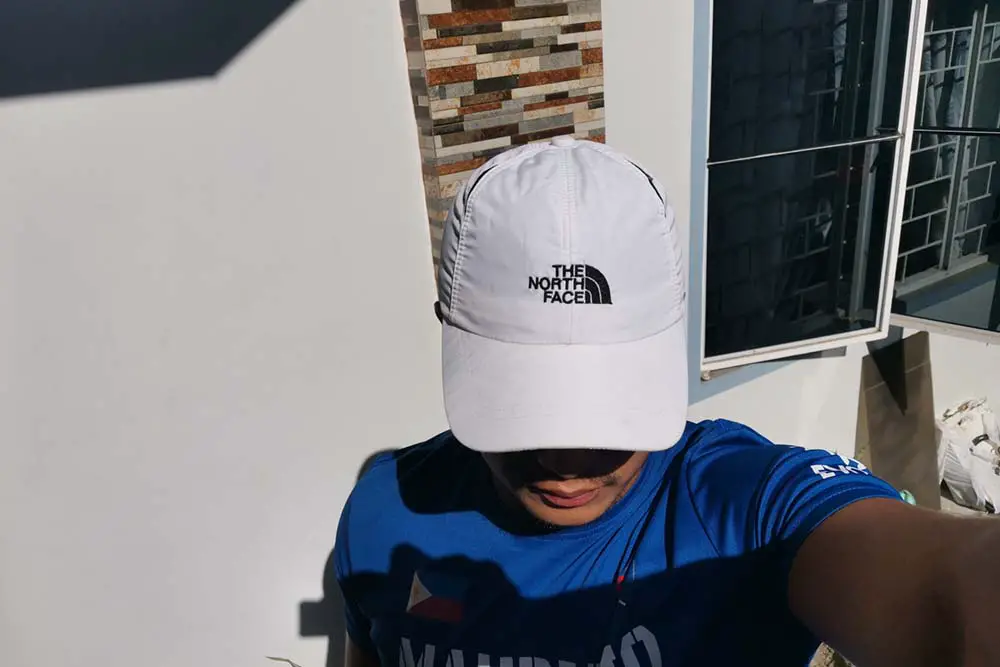
Make sure that the hat feels snug and secure yet comfortable when you wear them.
If you’re interested in learning more about running hats, I made an article that goes through all the benefits and how to choose a running hat. Check it out.
Light-Colored Sunglasses
Sunglasses protect your eyes from harmful UV rays and reduce the visual strain in your eye caused by glare.
The ideal sunglasses for trail running are light-colored ones that enhance the depth and allow you to see the trail more clearly.
Furthermore, you should choose sunglasses that fit well since you will be moving more when you’re running in trails.
To know more about running with sunglasses, check out this article that I’ve made.
